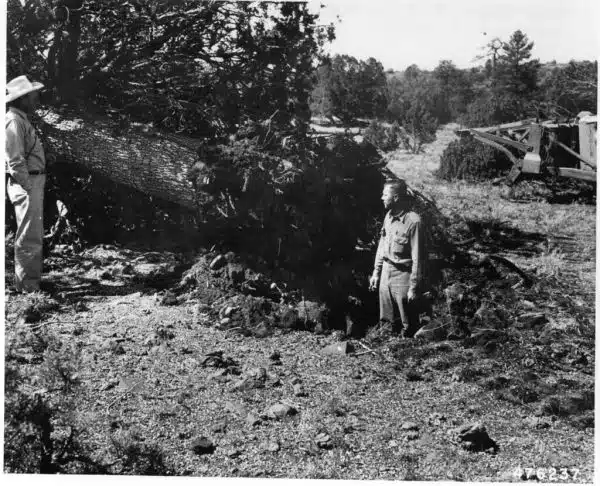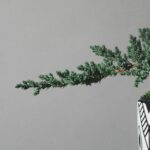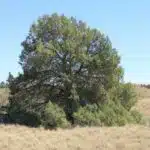Alligator juniper, also known as Juniperus deppeana, is a unique and resilient evergreen tree that thrives in arid and semi-arid regions of North America. The tree is characterized by its thick, scaly bark resembling the skin of an alligator and its needle-like leaves that turn blue-green as they mature. Growing and caring for alligator juniper requires some knowledge of its natural habitat, soil requirements, and pruning techniques.
To cultivate a healthy alligator juniper tree, it is essential to understand the plant’s growth requirements. This article aims to provide you with insight into how to grow and care for alligator juniper trees. We will discuss the ideal soil conditions, watering requirements, fertilization methods, pruning techniques, and pests and diseases that affect this plant species. By following these guidelines, you can ensure that your alligator juniper thrives year-round while serving as an excellent addition to your landscape design.
Understanding Alligator Juniper Basics
Alligator junipers are a unique species that is native to the arid regions of the southwestern United States and Mexico. These trees can grow up to 60 feet tall and have a distinctive scaly bark that resembles alligator skin. The growth pattern of these trees is slow, which means they require patience and careful attention during their initial stages of development.
One of the most unique features of alligator junipers is their cones, which are shaped like berries and can take up to two years to mature fully. Additionally, these trees have needle-like leaves that are dark green in color and can grow up to an inch in length. Alligator junipers also have a deep root system that allows them to survive in harsh environments with low water availability.
When growing alligator junipers, it is essential to choose the right location for your tree. These trees thrive in areas with lots of sunlight and well-draining soil. They can tolerate some shade but do not do well in areas with high humidity or excessive moisture. Additionally, you should avoid planting alligator junipers near buildings or other structures as their roots can cause damage over time.
Choosing The Right Location For Your Tree
When it comes to growing and caring for alligator juniper, selecting the right location is crucial. The ideal sunlight requirement for this tree is full sun exposure. It means that the tree should receive at least six hours of direct sunlight each day. Therefore, it is highly recommended to plant alligator juniper in an open area with plenty of sunshine.
Another important consideration when choosing a location for your alligator juniper tree is soil drainage. This type of tree prefers well-draining soil that does not hold water for prolonged periods. If you plant your alligator juniper in poorly drained soil, it may lead to root rot and other fungal diseases that can ultimately kill the tree. To promote good drainage, choose an elevated location or amend the soil with organic matter such as compost.
Overall, selecting the right location for your alligator juniper tree plays a vital role in its growth and health. Ideal sunlight exposure and proper soil drainage are two essential factors to consider when planting this species. In the next section, we will discuss the necessary steps for preparing the soil before planting your alligator juniper.
Soil Requirements And Preparation
Soil pH is an important factor to consider when growing alligator juniper, as it should be between 6.0 and 7.5 for optimal growth. Soil fertility should also be taken into account, as alligator juniper will require a nutrient-rich soil with plenty of organic matter. Additionally, the soil should be well-draining and should not be soggy or waterlogged. Finally, it is important to prepare the soil prior to planting, as this will help to ensure that the alligator juniper has the best chance of thriving.
Soil Ph
As a horticulturist or plant expert, it is essential to understand the importance of soil pH in growing and caring for alligator juniper. Alligator juniper grows best in slightly acidic soils with a pH range of 5.5 to 6.5. Testing soil pH is crucial before planting since it determines whether the soil is too acidic or alkaline for the tree’s optimal growth.
If the soil pH level is too high, meaning it is more alkaline, adjusting pH levels can be done through several methods. One way is by adding elemental sulfur to the soil, which aids in lowering the pH level over time. Another method involves incorporating organic matter like compost, peat moss, or pine needles into the soil as they help make it more acidic.
On the other hand, if the soil’s pH level is too low, meaning it is more acidic than optimal for alligator juniper growth, adding lime to the soil can help adjust its pH levels gradually. It is important to note that adjusting soil pH should be done moderately and consistently to avoid overcorrection that may cause harm to your trees’ roots. Knowing how to test and adjust your soil’s pH levels will ensure healthier and thriving alligator junipers on your property.
Soil Fertility
Another crucial aspect to take into consideration in growing and caring for alligator juniper is soil fertility. Soil fertility refers to the soil’s ability to provide essential nutrients that plants need to grow and thrive. Adequate soil fertility is vital in ensuring that alligator junipers grow healthy and strong, producing abundant fruits and seeds.
Composting benefits greatly contribute to improving soil fertility. Composting involves breaking down organic matter like leaves, grass clippings, and kitchen scraps into nutrient-rich humus that can enrich the soil with essential nutrients such as nitrogen, phosphorus, and potassium. Incorporating compost into the soil enhances its ability to retain water and increases its nutrient-holding capacity.
However, nutrient deficiencies can also occur even in fertile soils. Nutrient deficiencies are often caused by imbalanced or inadequate levels of essential nutrients required for plant growth. Knowing how to identify nutrient deficiencies is crucial in treating them promptly using appropriate fertilizers. Regular monitoring of your alligator junipers’ growth progress helps detect any nutrient deficiencies early enough before they cause substantial damage to your trees.
Watering Techniques For Alligator Juniper
Moving on from soil requirements and preparation, let us now dive into the crucial aspect of watering techniques for alligator juniper. It is essential to keep in mind that the watering frequency varies depending on the region’s climate where you have planted your tree. As a general rule of thumb, it is best to water your alligator juniper deeply but infrequently. This helps establish deep roots and ensures optimal growth.
One way to determine when to water your tree is by checking the soil moisture levels regularly. You can either use a moisture meter or insert a finger about two inches deep into the soil. If the soil feels dry, it’s time to water your tree. On average, water your alligator juniper once every two weeks during dry spells and reduce watering during rainy periods.
Overwatering can be detrimental to alligator junipers as they thrive in well-drained soil. Excess water can lead to root rot, which affects the tree’s overall health and growth. Therefore, it is essential to monitor your tree’s watering needs diligently and avoid overwatering at all costs. Proper watering techniques coupled with adequate sunlight exposure are instrumental in maintaining healthy foliage and promoting optimal growth for your alligator juniper.
Transitioning into fertilizing your tree for optimal growth, it is important to note that proper nutrient supply is critical for maintaining healthy foliage and promoting optimal growth.
Fertilizing Your Tree For Optimal Growth
Alligator juniper trees require fertilization to promote healthy growth and development. The type of fertilizer you choose to use can impact the overall health of your tree. Organic fertilizers are typically made from natural sources such as manure, bone meal, or compost, while synthetic fertilizers are chemically manufactured. While both types can provide necessary nutrients for your tree, organic fertilizers tend to be more environmentally friendly and sustainable.
The best time to fertilize your alligator juniper tree is in the early spring before new growth begins. Applying fertilizer during this time can help establish healthy root systems and support new growth throughout the upcoming growing season. It is important not to over-fertilize your tree as this can lead to nutrient imbalances and potential damage.
To ensure optimal results when fertilizing your alligator juniper tree, consider the following tips:
- Use a balanced fertilizer with equal amounts of nitrogen, phosphorus, and potassium.
- Apply fertilizer evenly around the base of the tree.
- Water your tree thoroughly after applying fertilizer to help nutrients reach the roots.
- Avoid fertilizing during periods of drought or extreme heat.
- Consider soil testing to determine any specific nutrient deficiencies in your soil.
By following these tips and using proper fertilization techniques, you can help promote healthy growth and development for your alligator juniper tree. In the next section, we will discuss pruning techniques that can also contribute to the overall health and appearance of your tree.
Pruning Techniques For Alligator Juniper
The art of pruning is an essential technique that every plant enthusiast should master. Pruning frequency depends on the species and its growth rate, and Alligator Juniper is no exception. Regular pruning ensures the health and aesthetics of your juniper. However, over-pruning can cause irreversible damage to the plant.
When it comes to pruning tools, always use clean and sharp equipment. Dull blades can damage the plant’s tissue, making it susceptible to diseases. Use hand pruners for small branches up to 1/2 inch in diameter, loppers for larger branches up to 1 1/2 inches in diameter, and saws for anything larger than that. Always sterilize your pruning tools with rubbing alcohol or a bleach solution after each use.
Pruning timing and aftercare are crucial factors that determine the success of your juniper’s growth. The best time to prune alligator junipers is during late winter or early spring before new growth emerges. This timing ensures that you do not remove any new shoots accidentally. After pruning, make sure to water your plant adequately and add organic mulch around its base to prevent water loss from soil evaporation. With proper care, your Alligator Juniper will thrive and add beauty to your landscape.
Transition: Now that you have learned about pruning techniques for alligator junipers let us move on to training them for desired shape.
Training Your Alligator Juniper For Desired Shape
- Alligator juniper trees can be trained to grow into desired shapes by applying the correct wire shaping techniques.
- Pruning your alligator juniper should be done carefully and selectively to avoid damaging the tree’s structure.
- To ensure a healthy alligator juniper tree, it is important to prune at the right time and in the proper manner.
- A good rule of thumb when pruning alligator juniper is to remove no more than one-third of the tree’s foliage in a single season.
Shaping With Wire
Alligator juniper is a remarkable tree that can be shaped into various forms, including bonsai. Shaping with wire is an essential technique in training your alligator juniper for the desired shape. The use of wire gauge and shaping tools are crucial in achieving the desired result.
When shaping your alligator juniper with wire, it is important to choose the right gauge of wire. A thicker wire will be required for larger branches, while a thinner one will work well for smaller ones. Wires that are too thin may not hold up well under tension and could damage the tree, while wires that are too thick may leave marks or scars on the tree. Therefore, it is important to choose the right gauge of wire for each branch.
Shaping tools such as pliers and cutters are also necessary when working with alligator junipers. Pliers are used to bend the wire around branches, while cutters are used to trim excess lengths of wire once they have been secured in place. It is essential to use clean and sharp tools because dull ones can damage or crush branches. With proper attention to detail and patience, you can train your alligator juniper into any desired shape using these techniques.
Pruning With Care
To achieve the desired shape of your alligator juniper, pruning with care is another essential technique that you must learn as a gardener. Proper tools are necessary in pruning an alligator juniper, including sharp and clean cutters, pruning saws or loppers that can help you remove larger branches. Timing for pruning alligator juniper is also crucial since they can only be pruned during their dormant period, which typically occurs in late winter to early spring. This timing prevents the tree from experiencing excessive stress.
It is important to prevent over-pruning when shaping your alligator juniper. Over-pruning can cause significant damage to the tree’s health and growth. You need to balance the tree’s shape and health by removing only about 20-30% of its foliage each year. This will allow sufficient sunlight and air circulation throughout the tree while keeping it healthy.
In conclusion, proper tools and timing are crucial when pruning alligator junipers. Preventing over-pruning is essential for maintaining a healthy and balanced tree shape. As a horticulturist or plant expert, incorporating these techniques into your gardening practices will help you achieve a beautifully shaped alligator juniper that not only enhances your garden’s aesthetics but also serves as an excellent focal point for your outdoor space.
Common Pests And Diseases To Look Out For
Now that you have trained your alligator juniper for desired shape, it is important to prevent infestations and identify symptoms of disease. Pests and diseases can be detrimental to the health of your tree, causing stunted growth or even death. Therefore, it is important to take proactive measures in keeping your alligator juniper healthy.
To prevent infestations, regularly inspect your tree for any signs of pest activity such as webbing or holes in the bark. If you notice any pests, immediately remove them by hand or with a spray of water. Additionally, you can apply insecticidal soap or neem oil to deter pests from returning. It is also essential to keep the area around your tree free from debris and weeds as they can harbor pests.
Identifying symptoms of disease early on is crucial in preventing the spread of infection. Look out for yellowing leaves, wilting branches or spots on the foliage as these could be signs of fungal or bacterial infections. If you notice any symptoms, prune affected areas and dispose of them in a sealed bag away from other plants. You may also need to treat your tree with fungicides or bactericides depending on the severity of the infection.
To ensure your alligator juniper survives harsh winter conditions, it is important to provide proper care and protection during this season. Stay tuned for tips on how to prepare your tree for winter care and protection.
Tips For Winter Care And Protection
Alligator juniper is a hardy species that can withstand freezing temperatures and winter conditions. However, it still requires proper care and protection during the winter months to ensure its health and survival. One of the best ways to protect your alligator juniper is by using protective coverings such as burlap or frost blankets. These coverings will help shield the tree from harsh winds, snow, and ice.
In addition to protective coverings, it is important to provide appropriate winter watering for your alligator juniper. While this may seem contradictory, trees require water even during cold weather when they are dormant. A lack of water can cause stress on the tree and make it more susceptible to disease and pests. It is crucial to water your alligator juniper deeply before the ground freezes, so it has sufficient moisture throughout the winter.
By taking these steps to care for your alligator juniper during the winter months, you can help ensure its health and longevity. Protective coverings and proper watering will help your tree survive even the harshest of winters. In the next section, we will explore how propagating alligator juniper can be a great way to bring new growth into your garden or landscape.
Propagating Alligator Juniper For New Growth
Winter can be a challenging season for alligator junipers, as they are susceptible to frost damage and dehydration. However, with proper care and protection, these trees can thrive even in the coldest months of the year. One effective way to protect alligator junipers during winter is to mulch around their base with organic matter such as straw or bark. This will help retain moisture in the soil and insulate the roots from extreme temperatures.
Propagation techniques can be used to create new growth in alligator junipers. One popular method is through cuttings, where a section of stem is taken from a mature tree and encouraged to root in a new location. To increase success rates, rooting hormone application is often used to stimulate root growth. It’s important to note that alligator junipers are slow-growing trees and may take several years to reach maturity.
When propagating alligator juniper through cuttings, it’s essential to choose healthy branches that are free from disease or pests. The cutting should be taken during the dormant season when the tree isn’t actively growing, typically between late fall and early spring. Once rooted, the new tree should be carefully transplanted into its permanent location and given plenty of water and nutrients for optimal growth. With patience and proper care, alligator junipers can thrive for generations to come.
Conclusion
Alligator Juniper, a unique tree species native to the southwestern region of the United States, is known for its distinctive bark and impressive height. Proper care and maintenance are essential for the healthy growth of this tree. Understanding the basics of alligator juniper, including soil requirements, watering techniques, fertilizing methods, training tips, and pest control measures is necessary.
Choosing the right location for your tree is crucial as alligator junipers thrive in full sun exposure in well-drained soils. The use of organic matter during soil preparation can also aid in optimal growth. Watering techniques should be tailored to suit specific environmental conditions and soil types. Fertilization can be done using organic or chemical means depending on personal preference. Pest control measures are also essential in maintaining a healthy alligator juniper.
An interesting statistic reveals that Alligator Juniper has been documented to have a lifespan of up to 500 years when growing under favorable environmental conditions. With proper care and maintenance practices outlined above, one can achieve maximum growth potential while increasing the longevity of their alligator juniper trees. In conclusion, growing and caring for an alligator juniper requires dedication and patience; however, it is worth it considering its aesthetic value and ecological importance as a habitat for wildlife species in its natural environment.
Image Credits
- “Alligator Juniper – 1954” by Coconino NF Photography (featured)





























